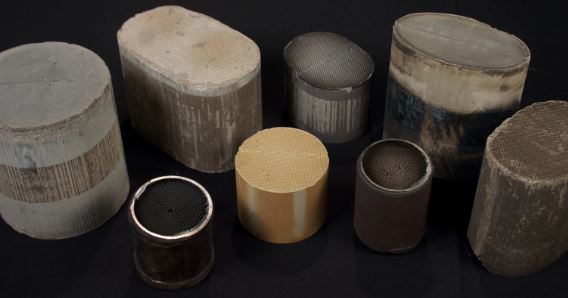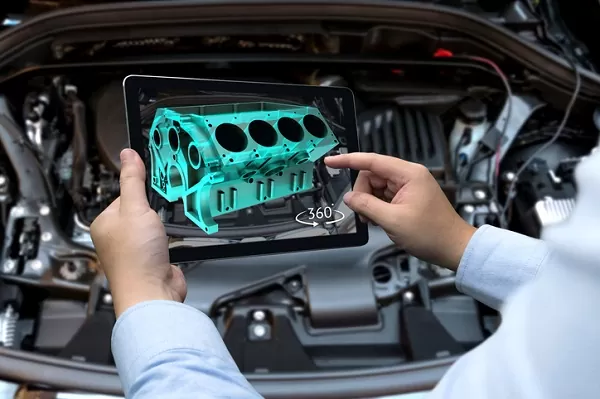Platinum is a rare metal that is often used in catalytic converters. Catalytic converters are important for reducing emissions from cars, and they contain small amounts of Platinum to help with this process. Platinum is a valuable metal, and it can be worth a lot of money when it is scrapped.
In this blog post, we will discuss the amount of Platinum in catalytic converters and its value on the scrap market. We will also explore if its possible to extract Platinum from old catalytic converters.
What Types Of Precious Metals Are Found In Catalytic Converters And Why?
Precious metals are often used as catalysts because they can speed up chemical reactions while remaining chemically stable themselves. The three most common precious metals used in catalytic converters are platinum, palladium, and rhodium.
Platinum is the most active catalyst and is effective at reducing emissions from both gasoline and diesel engines. Palladium is less active than platinum but has a lower cost, making it a popular choice for use in mass-produced vehicles.
Rhodium is the least active of the three precious metals but has the highest resistance to poisoning, making it useful for certain types of engine applications.
The use of precious metals in catalytic converters helps to reduce harmful emissions from vehicles, making them an important part of protecting the environment.
What Is Platinium?
Platinum is a chemical element with the symbol Pt and atomic number 78. It is a dense, malleable, ductile, highly unreactive, precious, silverish-white transition metal. Its name is derived from the Spanish term platina del Pinto, meaning “little silver of the Pinto River.” Platinum is used in catalytic converters, laboratory equipment, electrical contacts and electrodes, platinum resistance thermometers, dentistry equipment, and jewellery.
Because of its scarcity in Earth’s crust , only a few hundred tonnes are produced annually , and given its numerous applications , it is highly valuable .
How Does Platinum Work Inside A Catalytic Converter?
The platinum inside a catalytic converter works as a catalyst to help convert exhaust fumes into less harmful gases. The platinum helps to speed up this reaction, and also helps to keep the reaction going until it is complete. Platinum is used in this application because it is one of the few metals that can withstand the high temperatures found in a car’s exhaust system.
Platinum is also inert, meaning it will not react with other elements in the converter. This makes it an ideal material for use in a catalytic converter. Thanks to platinum, catalytic converters are able to clean up a car’s exhaust fumes before they are released into the atmosphere.
What Is The Value Of Platinum?
Platinum is one of the most precious metals on Earth. It is more valuable than gold, silver, and even palladium. As of 2022, the value of platinum per ounce is $1000 USD, and the value per gram is $31 USD. There are several reasons why platinum is so valuable.
First, platinum is rarer than gold and silver. It is estimated that there are only about 165 tons of platinum in the world. This makes it a very scarce resource. Second, platinum is durable and does not corrode. This makes it ideal for use in jewellery, electronic components, and other industrial applications. Third, platinum has a high melting point and density. This makes it difficult to produce and adds to its value.
Platinum is a valuable commodity that will continue to increase in value over time.
How Much Platinum Is In A Cars Catalytic Converter?
The average car has a catalytic converter that contains about 3-7 grams of platinum. That’s about $2000 worth of the metal at the higher end of the scale! Most of that is in the form of a very thin coating on the honeycomb-shaped catalyst. The other precious metals in a catalytic converter include palladium, rhodium, and ruthenium. A typical converter also has a small amount of gold in it.
All told, there could be as much as $4000 worth of precious metals inside your car’s catalytic converter!
Which Types Of Cars Contain The Most Precious Metals Inside The Catalytic Converter?
The amount of precious metals inside a converter can vary depending on the make and model of the car. For example, newer cars tend to have more platinum in their converter than older models.
So, which types of cars contain the highest amount of precious metals? Here are a few examples:
-The Mercedes-Benz S600 has a catalytic converter that contains around $400 worth of palladium.
-The Audi A8 L W12 quattro has a converter with $700 worth of platinum.
-The BMW 760iLi contains a converter with $1300 worth of rhodium.
As you can see, there is a wide range of values when it comes to the amount of precious metals inside a car’s catalytic converter
Can You Recover Value From An Old Catalytic Converter?
There are many reasons why people use scrap catalytic converters to recover value from the precious metals inside. Even a small catalytic converter can contain a lot of value.
Another reason people scrap catalytic converters is that the process of extracting precious metals is relatively simple. All you need is some basic equipment and chemicals, and you can do it yourself. This makes it a great option for people who want to make some extra money.
So if you have a catalytic converter sitting around, don’t throw it away! You could be sitting on a gold mine. Scrap it and reap the rewards.
How To Get Platinum Out Of A Catalytic Converter
There are a few ways that you can extract the Platinum from your old catalytic converter. One way is to use a process called aqua regia, which involves using a mixture of hydrochloric and nitric acids. This method is effective, but it can be very dangerous if not done properly. Another way to extract Platinum is to use a process called electrolysis, which involves passing an electric current through the catalytic converter. This method is also effective, but it can take longer than aqua regia.
It is possible to extract Platinum from a catalytic converter yourself, but it is not recommended unless you have the proper equipment and knowledge. The process is very dangerous and can release harmful chemicals into the air if not done correctly.
It is much safer and easier to take your catalytic converter to a professional scrap recovery service that specializes in extracting metals. They will have the proper equipment and expertise to safely remove the rhodium without harming themselves or the environment.
Go Home











